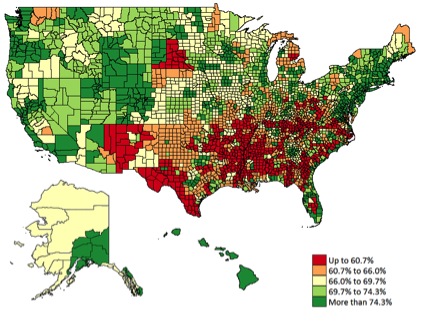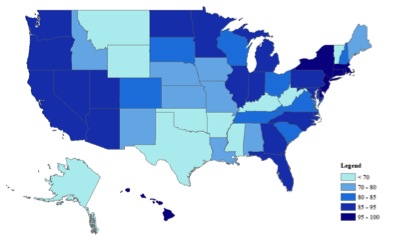

Over the past six years, under President Obama’s leadership the United States has expanded broadband access, bringing millions of people online and creating significant new economic, educational and social opportunities.
Since the President took office, investments from the Federal government have helped deploy or upgrade more than 110,000 miles of network infrastructure, and more than 45 million additional Americans have adopted broadband Internet. And as a country we’ve made high-speed wireless coverage available to 98% of Americans. Over the past several months, the Administration has doubled down on these efforts. In July, we launched the new ConnectHOME program in twenty-seven cities and one tribal nation to help bring Internet to more than 275,000 low-income households.
But more needs to be done. While our wireless coverage for handheld devices is among the best in the world, a recent analysis from the Council of Economic Advisers highlighted that nearly 75 million Americans don’t have a high-speed Internet connection at home, a critical measure of high-speed Internet access and use. As the map at right suggests, rural parts of the country lag behind cities and more densely populated suburbs.
Even where broadband uptake is high, there’s room for improvement. As the chart below highlights, nearly 51 million Americans cannot purchase a wired broadband connection with download speeds of at least 25 Mbps, and only 63 percent have access to speeds of 100 Mbps or more. To bring better, faster broadband to more Americans, we need to significantly increase competition and investment.
That's why last March the President launched the Broadband Opportunity Council, a whole-of-government effort to expand broadband deployment and adoption, with a focus on bringing broadband to underserved communities and encouraging new entrants and new investments to improve broadband quality and service. Chaired by the Department of Commerce and the Department of Agriculture, the Broadband Opportunity Council spent five months reviewing every major Federal program that provides support for broadband, from the Department of Housing and Urban Development and Health and Human Services to the Department of Justice. Last month, the Council submitted its recommendations to the President for his review, and today, the White House is releasing its findings.
The Council makes four broad recommendations:
(1) Modernize Federal programs to expand program support for broadband investments.
(2) Empower communities with tools and resources to attract broadband investment and promote meaningful use.
(3) Promote increased broadband deployment and competition through expanded access to Federal assets.
(4) Improve data collection, analysis and research on broadband.

Broadband is a top priority for President Obama and we will be pushing forward aggressively to implement these recommendations over the next 18 months. Among other actions, Federal agencies are committed to:
- Modernizing Federal programs valued at approximately $10 billion to include broadband as an eligible program expenditure, such as the Department of Agriculture’s (USDA) Community Facilities (CF) program, which will help communities around the country bring broadband to health clinics and recreation centers;
- Creating an online inventory of data on Federal assets, such as Department of the Interior (DOI) telecommunications towers, that can help support faster and more economical broadband deployments to remote areas of the country;
- Streamlining the applications for programs and broadband permitting processes to support broadband deployment and foster competition; and
- Creating a portal for information on Federal broadband funding and loan programs to help communities easily identify resources as they seek to expand access to broadband.
But to bring faster, lower price broadband into more homes will take more than the Federal government. That’s why the Administration is calling on the private sector, local, state and Tribal governments, community organizations and foundations to work with us to tackle some of the big challenges, like opening up critical data sources around the country and helping communities become ‘broadband ready’ to encourage more investment.


